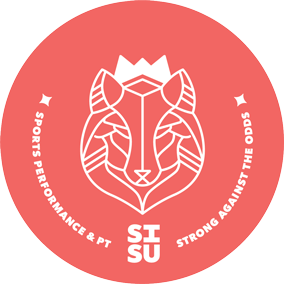As a physical therapist, I was trained biomedically. When my patient experiences pain, I was educated to tell them that the reason for that is because of x, y, and z. Obviously, it’s objective. Right? (*insert crying laughing emoji*) That training has been ingrained in me for a decade. Several years ago, while I was working with children, I found myself grappling with the reasons why a 10 year old could be experiencing persistent pain. It made zero sense. Kids are like friggin perfect little biological beings! Then when I would attempt to “fix” their symptoms through my biomedical training, and they wouldn’t get better I was left even more confused. So I set off on a journey to discover why this might be and I came across this article. It was the first article of many articles to follow, that altered my trajectory of thinking how I needed to manage persistent pain, or any pain for that matter, much better than I had been.
Since that time, I have extensively studied, marveled, obsessively loved the pain science revolution. It has absolutely changed me as a person and as a therapist. All for the better of course! Pain science has liberated my views, my treatments, my professional career, but it doesn’t come without building my own plasticity and changing/re-wiring my OWN brain. My brain has been wired one way and I still catch myself thinking biomedically and speaking biomedically. It pains me (pun intended) to even say that. What I have found though, is that there does seem to be some sort of balancing act between the biomedical and biopsychosocial approaches, for both me and my patient. I cannot be expected to change overnight, after all, I’m only in Chapter 3 of Explain Pain Supercharged. I also cannot expect the same of my patients, although some do seem to take to it quite well. What’s significant for me, is realizing which patients will respond to biomedical thinking with the biopsychosocial mix and which won’t, as I continue to transition my own processes of learning towards that deep gut, belly belief and understanding of pain science.
So admittedly, I have found myself bouncing back and forth. My steady hand in pain science is ever present because I have a deep gut belly belief that everyone’s body is beautiful. I love the incredible adaptability of our bodies. It’s truly amazing isn’t it? Unfortunately, many people just don’t have the luxury of loving their bodies the way I love their bodies, for an enormity of reasons. Cultural reasons likely being a large factor. And what I’ve discovered, is that it takes time to cultivate the belief and understanding that the body is a beautiful thing, adaptable, resilient, strong, capable. Many patients, do not inherently feel that way. I’ll catch them saying things like, “my whole right side is jacked up” or “every time I do X, I’m thrown out of whack” or “I’ve always been unstable.” While I wish I could convince everyone that they’ll be ok, that their situation can be temporary, they don’t always feel that way when it comes to their pain, and I cannot blame them. When I hear them say things like those above, I know almost instinctively that they believe in the biomedical causes to their symptoms. Which immediately puts me in a rough situation that I still have a tough time navigating. I’m not afraid to say that I tend to meet them right there, biomedically speaking. I validate their biomedical processes because I cannot deny that I too still believe biomedical reasons exist to sensations of pain. So I meet them there, and I teach them about the biopsychosocial, the beauty of their body, as we move forward with discussions while they do exercises to help “stabilize.”
Here’s the thing, being a physical therapist is like art. I’m constantly moving and shaping myself and my patient to create something. We’re painting a picture together and progressively moving towards a deep, belly gut feeling that they (my patients) are beautiful. I care so deeply about the success of my patients and I can’t help but feel that when I’m working with them, we’re making a painting together. The balancing act, is knowing where I can contribute and where they can contribute. Because ultimately, I know that they’ll be the one’s to take the painting home.
Cheers,
Dr. Ellie Somers, Physiotherapist
Sisu Sports Performance & PT is accepting new clients!! Feel free to send me an email or schedule an appointment today!






